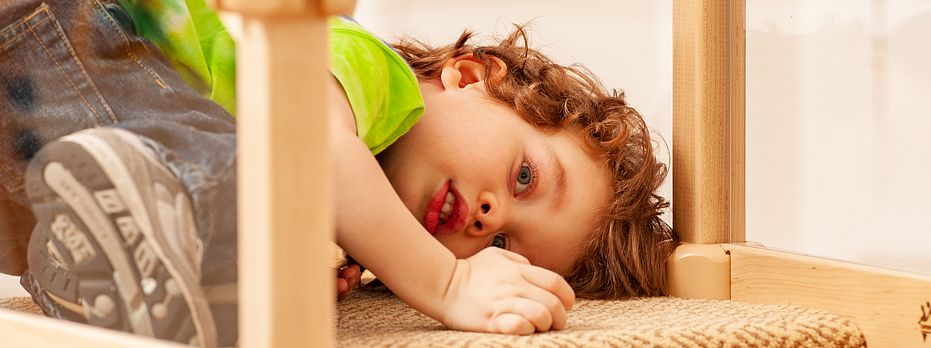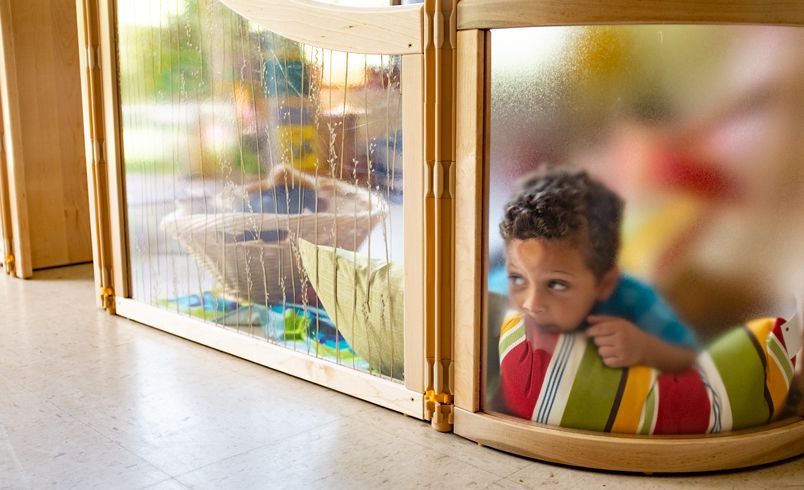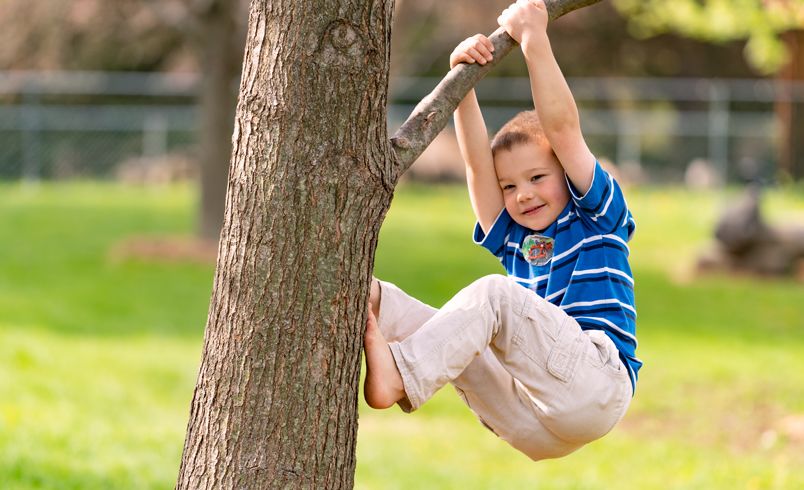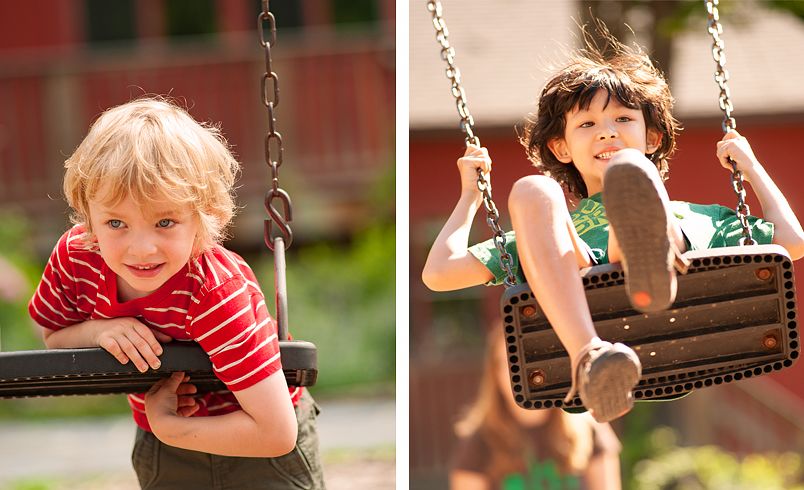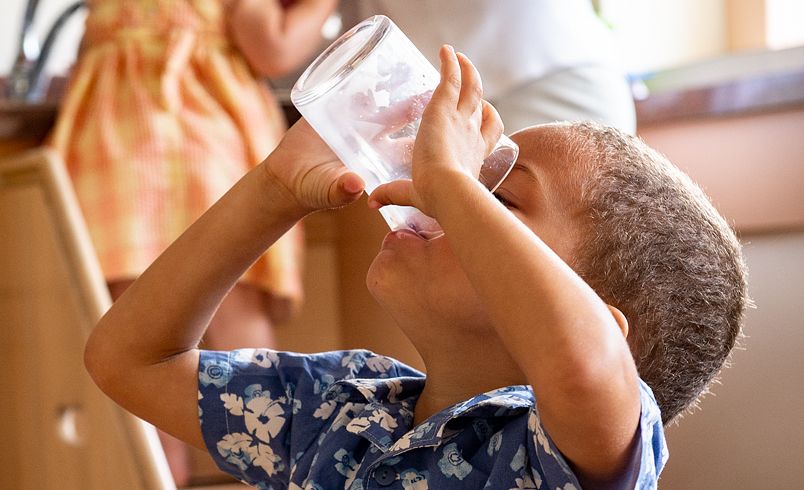The Impact of Sensory Experiences on Behavior
| September 2022Imagine: A preschool classroom with seven children and two teachers. Three months into the school year most of the children have learned the routines and expectations of the classroom. However, there is one student, Taylor, who still struggles to be a part of the group and participate throughout the day. When Taylor arrives, he is dropped off in the front of the school by his family, like all the other children. He and his peers then follow a routine of walking back to the classroom with a teacher. At this time, Taylor often runs away from the classroom, crying and screaming.
Once in the classroom, Taylor chooses to be in the calm down corner by himself for the majority of the day. When other children come too close to Taylor’s space or if teachers attempt to engage him, Taylor easily becomes overwhelmed. Up till now, the teachers have tried a variety of ways to teach and engage Taylor in daily activities and routines, including visuals, preferred activities, and making changes to the schedule to fit Taylor’s preferences. They have also partnered with the family to complete a referral for a special education assessment.
As the teachers continue to observe, reflect, and plan with the family, one of the teachers attends a training on sensory opportunities for young children. During the training, the teacher learns that there are actually eight sensory systems and a child’s brain can often be overwhelmed by the amount of information it receives from all eight areas. Helping a child regulate and calm down from this sensory overload can often take a lot of time and strategies specific to a child’s sensory profile. The teacher had an “aha!” moment; she realized that Taylor was overstimulated during drop off time when all the families gathered at the front gate. The effects of the noise and busyness of this routine were lingering with Taylor throughout the day and impacting his ability to participate in the classroom and interact with his peers.
The teacher quickly met with her team and Taylor’s family to make a plan. They decided that the family could enter the school in the morning through a secondary gate where there was less people and noise. Like a light switch, Taylor’s behaviors, relationships and engagement flipped! Now Taylor fully participates in activities and routines throughout the day. He engages with his peers and explores the classroom with interest and excitement. Each of the teachers has the opportunity to build a positive relationship with Taylor and support his learning and engagement.
So, what is the relationship between our sensory systems and our behaviors? Why did such a simple change to the start of Taylor’s day have such an enormous impact on his participation and engagement?
Like Taylor’s teacher at the beginning of this story, we are all familiar with the 5 sensory systems we learn in grade school:
- Taste (Gustatory)
- Touch (Tactile)
- Smell (Olfactory)
- Sight (Vison)
- Hearing (Auditory)
However, there are three more senses that are vital to self-regulation and can greatly impact how we behave and engage in our different environments. These are the proprioceptive, vestibular, and interoceptive sensory systems.
Proprioceptive System
The proprioceptive system senses and monitors our body's position and gives us information about the position of our body parts without us having to look at them. For example, walking up the stairs without looking down at your feet. Proprioceptive input also gives us information about how much force our muscles should use when completing tasks, such as picking up and cracking an egg or determining how hard to push on a pencil when writing on paper. Proprioceptive input also includes deep pressure to our muscles and joints, such as massages, hanging by our arms and heavy blankets. This kind of input can be regulating and calming to some children.
Vestibular System
The vestibular system refers to our sense of balance and movement. This helps us move our body without falling so we can do things like ride a bike or sit upright. This system lets us know if we are moving very fast on a roller coaster even if our eyes are closed. One thing to note is that the effects of vestibular input can last up to 6 hours! This is why we sometimes still feel the sensation of rocking long after getting off of a boat or continue to feel motion sickness after leaving a car. It also means that children who are comforted by the sense of rocking or swinging will stay regulated long after receiving vestibular input.
Interoceptive System
The interoceptive system monitors and signals biological needs such as hunger, thirst, body temperature, bathroom needs, pain etc. Young children served in ECE settings are still learning how to recognize the signals their bodies send. Often all children sense is pain and discomfort, without being able to distinguish if it is hunger, pain, thirst, or the need to use the bathroom. When this happens, children will express strong feelings and/or use behaviors to communicate that they are uncomfortable. Teaching young children to recognize these signals by naming them and providing feedback is essential for self-help and self-regulation skills.
Within each of these sensory systems, we all have unique likes/ dislikes which direct us to seek or avoid certain sensory inputs. One way to think of seeking and avoiding types of sensory input is using the “Big Cup/Little Cup” analogy. “Big Cup” refers to sensory input that a person is seeking more of while “Little Cup” refers to sensory input that a person is avoiding. For example, some children who seek vestibular input (“Big Cup”) will constantly spin during their free time or enjoy rides on merry-go-rounds and carousels. Other children may avoid that same vestibular input (“Little Cup”) as it can lead to feeling overwhelmed and uncomfortable. When a sensory system receives too much input or too little input, it can cause us to feel dysregulated. Feeling dysregulated (uncomfortable and overwhelmed) can trigger our fight, flight, and freeze response, which often looks like “challenging behaviors” to adults.
When we are able to put together and organize the information we receive from all of our sensory systems, it makes it possible for us to participate in everyday activities. We can make sense of the world around us and successfully navigate and interact with our environments.
As educators, we have the wonderful opportunity and responsibility to provide thoughtful, guided exposure to sensory experiences for young children. These opportunities ensure that children learn to process and appropriately respond to different sensory stimuli in their environments. Sensory experiences are so powerful they can rewire the brain. These experiences can help children understand their environments more clearly, making them feel safe and ready to learn and try new things!
Additional Resources:

